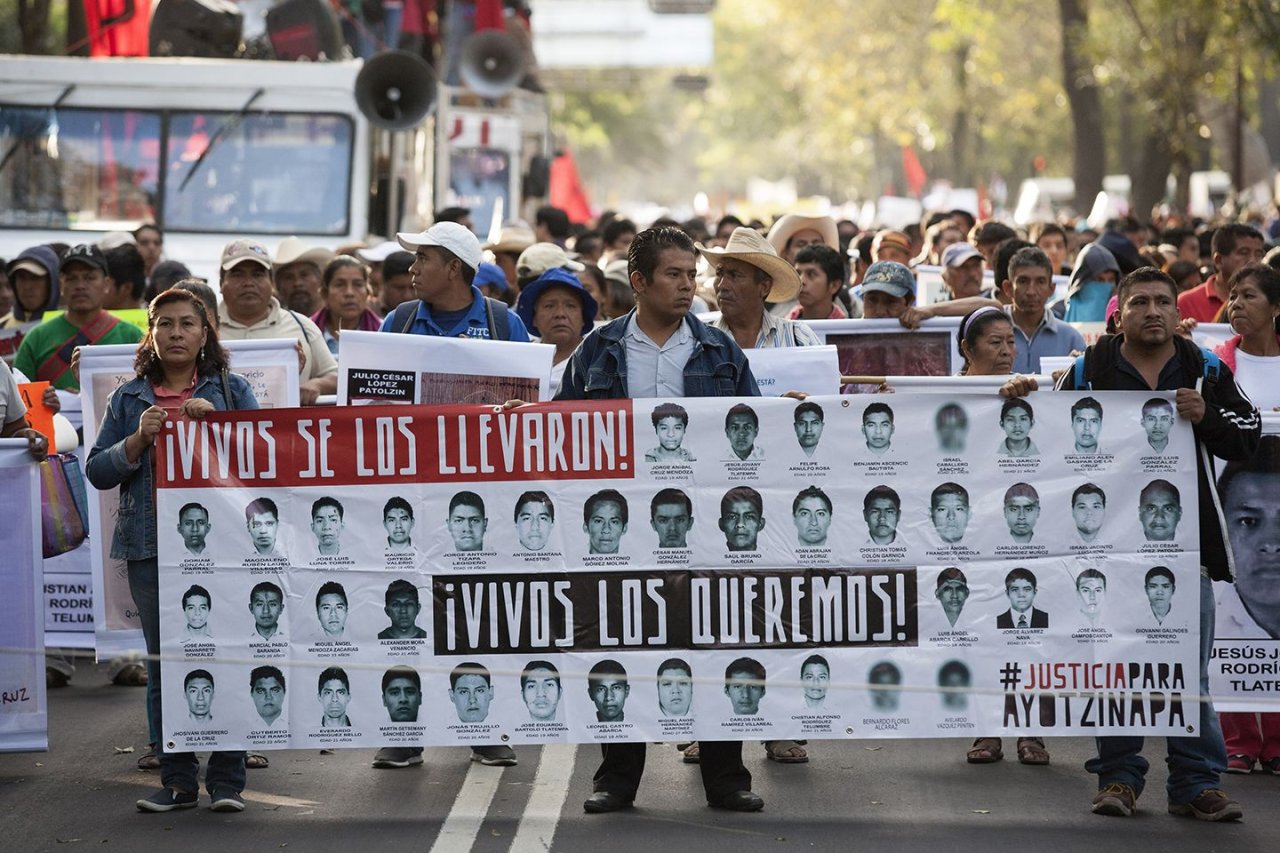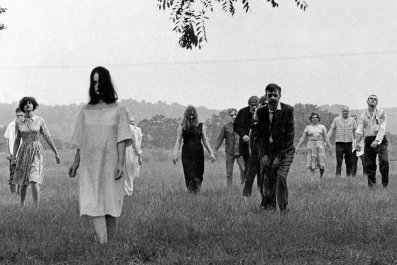On September 26, 2014, police in the Mexican town of Iguala intercepted a group of students from the Ayotzinapa Rural Teachers' College, located in the Guerrero state, a region rife with drug-related violence. The students—also called normalistas—had been stopped for hijacking two buses to travel to Mexico City, where they intended to join the annual march that commemorates the 1968 Tlatelolco massacre, a national scandal in which hundreds of students and civilians were killed by the military. In the subsequent clash, six students, all in their 20s, were killed and another 25 wounded. Forty-three simply vanished.
The government's official investigation found that authorities turned the normalistas over to the Guerreros Unidos drug cartel, which killed and then burned the missing students in a trash pit in Cocula. Mexicans rejected that version, and thousands demonstrated, shouting, "They took them from us alive, want them back alive" and "Fue el estado! [It was the state!]."
In March the office of the U.N. high commissioner for human rights found that the so-called Ayotzinapa investigation was inadequate and "affected by cover-ups." For journalist Anabel Hernández, it was long-sought vindication. Hernández has been investigating collusion between government officials and drug cartels, as well as the illicit drug trade and abuse of power, for Mexico's biggest publications for over two decades. Death threats from the cartels forced her and her family to leave the country—they now live in San Francisco—but she has continued to investigate Ayotzinapa. Using video from surveillance footage, medical reports and secret government documents, she pieced together her theory in A Massacre in Mexico: The True Story Behind the Missing Forty-Three Students, first published in Spanish in 2016.
Newsweek spoke with the author just before the book's English-language release.
What's changed since the Spanish-language version was published?
The findings have been confirmed by the United Nations, a federal judge and a court in the state of Tamaulipas, Mexico. The majority of the people apprehended by the Mexican government for the attacks on the students had been brutally tortured and forced to confess to a crime they didn't commit. One of the tortured individuals included Felipe Rodríguez Salgado (aka "El Cepillo," or "the Brush"), who the government accused of burning the students in the alleged trash pit. There are five people who have been exonerated, and a federal judge began to issue release orders for the others [in September].
Who is responsible for the attacks?
Those who committed the crimes include the mayor who ordered the police to intercept the hijacked buses, the service people from the 27th Infantry battalion, members of the federal police assigned to the Iguala headquarters, members of the office of the attorney general and state police and municipal authorities. We're talking about nearly 60 public officials.
The other culprits are those who covered the crimes up—the officials who refused to incarcerate and prosecute. The administration of [outgoing President Enrique] Peña Nieto; the defense secretary, Salvador Cienfuegos; the then-attorney general, Jesús Murillo Karam; and the then–interior minister, Miguel Ángel Osorio Chong.
Four years later, have there been advances in bringing these officials to justice?
No. It is proved that at least nine police officers fired weapons that night but no participating service person, federal and state police officer or member of the office of the attorney general has been detained.
The 43 students are among the many thousands who have gone missing in Mexico, correct?
In the last 12 years, 36,000 people have disappeared amid the country's so-called war on drugs. When the Felipe Calderón administration ended in 2012, The New York Times and I had access to a database that contained 25,000 missing people at the time. But the Calderón administration wanted to delete the list so Mexicans wouldn't find out how many people disappeared and under what circumstances. This is the reason why the Ayotzinapa case is so important: There is a pattern here. Most of these disappearances occurred with the presence of authorities during the crime.
From the Calderón government to the outgoing Peña Nieto administration, it is believed that disappearances are carried out by organized crime such as drug cartels, kidnappers or human traffickers. The Mexican government has never recognized that state institutions are either the main perpetrators or accomplices of these crimes.
It is proved that the Mexican army has actively participated in the country's most terrible massacries—including Tlatelolco in 1968 and El Charco in 1998. In many cases, these crimes go unpunished; there is no single military member behind bars.
President-elect Andres Manuel López Obrador pledged to reopen the investigations when he assumes office. Are you hopeful?
I spoke with Alejandro Encinas, the undersecretary of human rights, starting December 1. He confirmed that the new administration will submit the Mexican army, public officials, soldiers and captains to a rigorous interrogation, in hopes of finding the corpses. López Obrador may have good intentions, but the consequences of a government holding an army as powerful as Mexico's accountable will be unthinkable.
And yet it is indispensable to do so. The army has never been more powerful, with a larger arsenal and improved training. But instead of using these to combat drug cartels, they use them against the population. We can't talk about a democratic government as long as there is an institution that kills citizens with impunity. The army and marines have no training in human rights and have been permeated by drug cartels.
It's also worth noting that the military is financed, trained and well equipped by the U.S. through the 2008 Mérida Initiative, a security cooperation agreement that seeks to combat money laundering and illicit drug trade.
Do you still fear for your life?
We can't return to Mexico to live. I went back in August 2016 for the investigation and to publish my book. At that time, I was told that I was being followed and was forced to leave again. Notwithstanding, I'm returning once or twice every month to continue my research. Criminals inside and outside of the government managed to get me out of my homeland, but they won't silence me.















